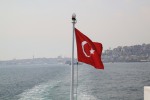I went to Senegal for the 2014 New Years Eve so I wanted to do a post about their dance. I thought I was really good while I was dancing. But looking back at the video I was horrible and way too stiff!
I didn’t understand much about Senegalese dance, but it must have some tradition, story, ritual or base behind it so I did some research.
.
.
.
There is Mbalax, it was created around 1970. Mbalax is a type of music. It’s a mix of soul, blues, jazz, R&B, rock, and Senegalese drums. Even though French is the official language in Senegal these songs are in Wolof (the most common language in Senegal). There is a fun, festive, unique, quirky, modern side to this dance and that is why I like it. Watch this video:





